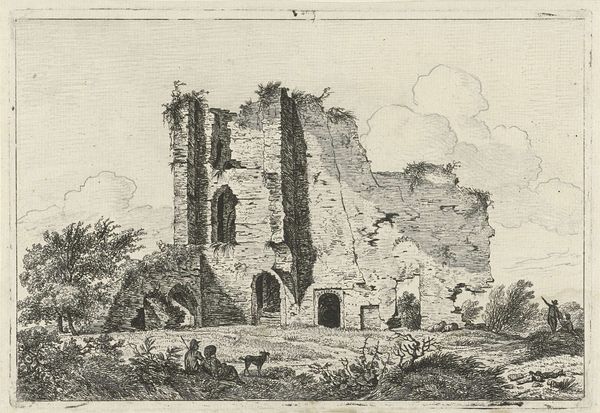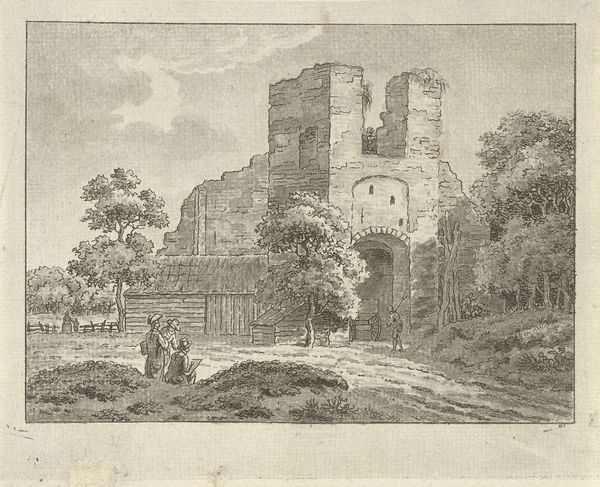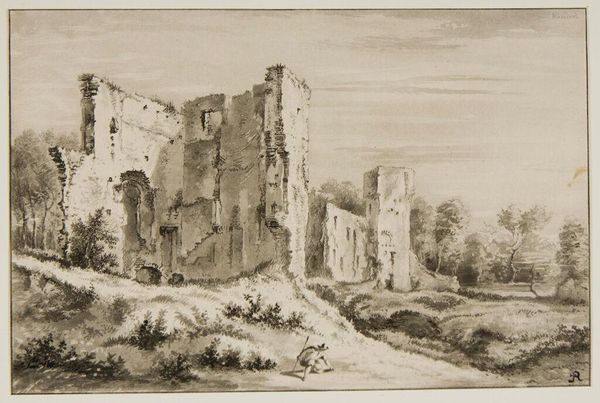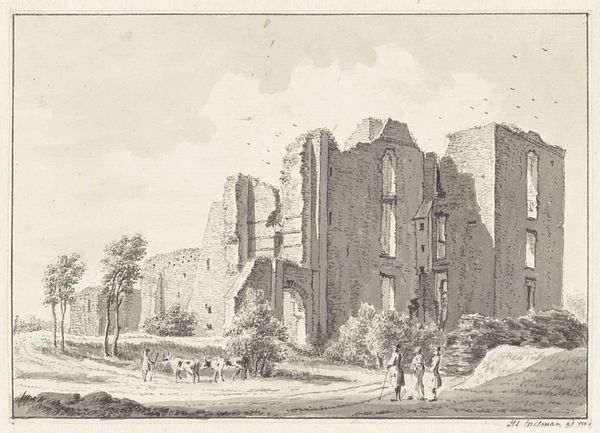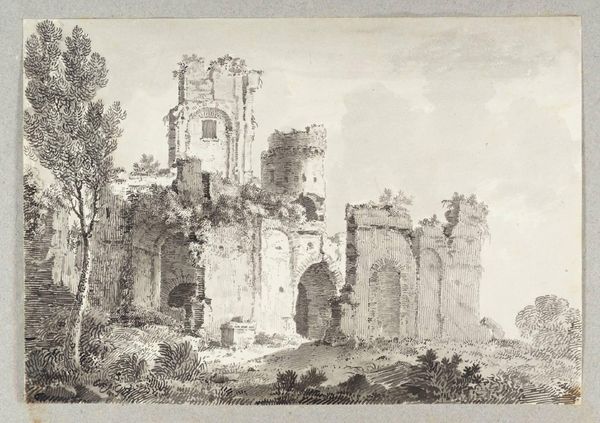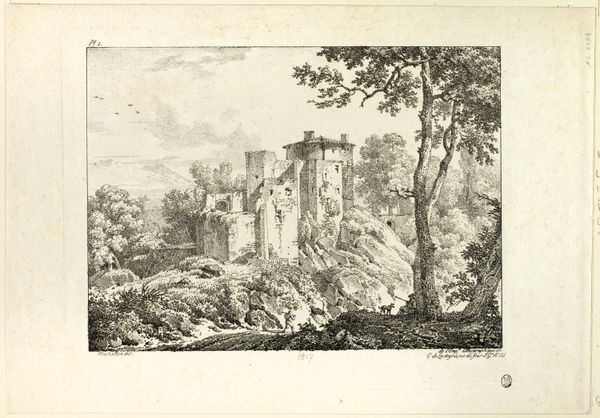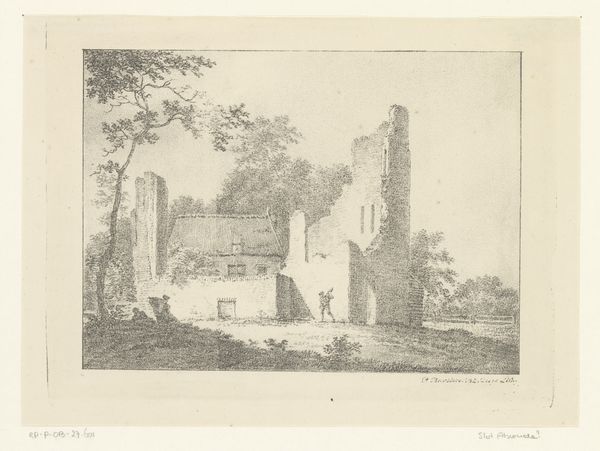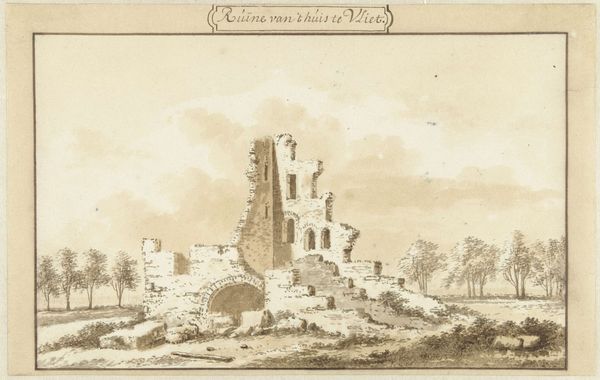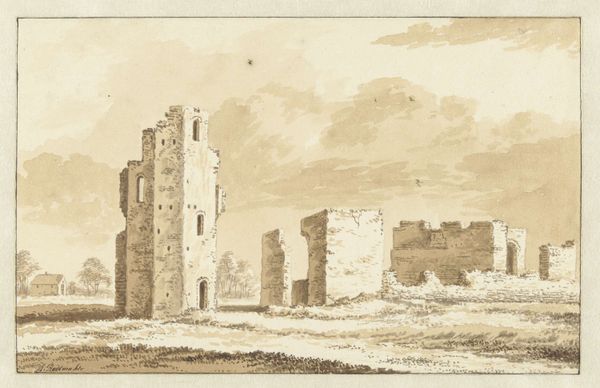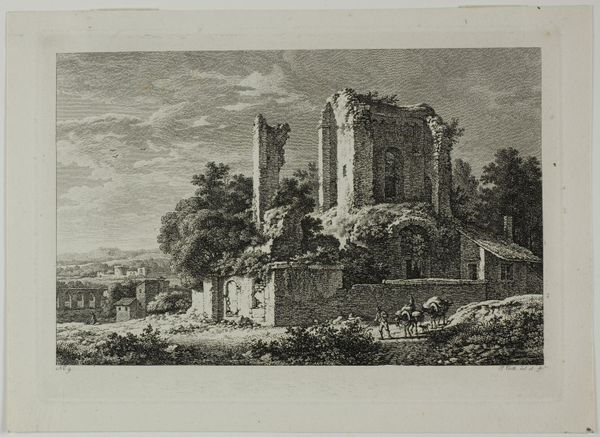
Gezicht op de ruïne van kasteel Brederode, Haarlem 1795 - 1813
0:00
0:00
joannespietervisserbender
Rijksmuseum
print, etching, engraving, architecture
# print
#
etching
#
landscape
#
etching
#
figuration
#
romanticism
#
line
#
history-painting
#
engraving
#
architecture
Dimensions: height 208 mm, width 270 mm
Copyright: Rijks Museum: Open Domain
Curator: Joannes Pieter Visser Bender created this print, using etching and engraving, entitled "Gezicht op de ruïne van kasteel Brederode, Haarlem." It was made sometime between 1795 and 1813. Editor: Immediately, the scene reads as melancholic—the ruins loom behind a humble gathering of people picnicking in the foreground. There's a quiet tension between decay and life. Curator: Indeed, Bender uses the stark lines of the etching to convey that ruin as almost a stage for the figures in the foreground. What does that tension you mentioned evoke in you? Editor: It speaks to power and the transience of that power. This castle, once a symbol of authority and strength, has crumbled into a picturesque backdrop for everyday life. It highlights the human condition—that everything, even the mightiest structures, eventually succumb to time. And of course, those figures almost amplify it. Curator: The ruined castle certainly evokes themes of mortality, doesn't it? It's a symbol frequently appearing in Romanticism, signaling an interest in ruins, which were believed to carry the weight of history. You see the figures as unaware, but it seems to me that perhaps they gather here *because* of that very weighty feeling. It seems this place is meant to signal memory. Editor: Perhaps it signals a shift in power dynamics, too. These ruins could represent a transition from feudal power structures to a more modern, potentially democratic, society where the focus shifts to the common people—represented by the picnicking family. Curator: A keen interpretation, given the historical context of the print's creation, made around the time of the Batavian Republic's formation. So much upheaval! It encourages me to re-examine what those figures represent for that context. Editor: Absolutely! I think this image encapsulates a potent commentary on history, power, and the quiet resilience of everyday life against the backdrop of fading grandeur. Curator: It’s so fascinating how different lenses—whether considering visual language or social contexts—reveal fresh layers of meaning within what might seem at first to be just a landscape. Editor: Exactly. It reinforces how art acts as both a reflection and a refraction of its time.
Comments
No comments
Be the first to comment and join the conversation on the ultimate creative platform.
